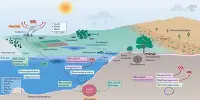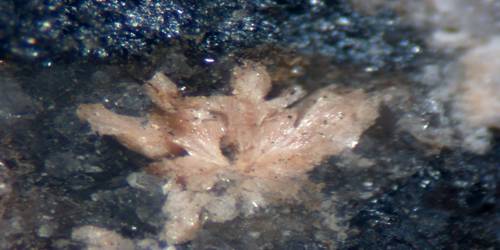After the Mexican government cracked down on solar geoengineering, the tiny startup Make Sunsets, which had been experimenting with releasing sulfur dioxide into the atmosphere to reflect sunlight in order to cool the earth, announced Wednesday (January 18, 2023) that it would cease operations for the time being and review its strategy.
The idea of discharging aerosols into the atmosphere to cool the world has been around since the 1960s, but until recently, as the urgency of climate change has been more obvious, it had mostly been confined to science fiction.
The White House is currently coordinating a five-year research plan to study the idea, which is colloquially known as “solar geoengineering,” and the quadrennial U.N.-backed Montreal Protocol assessment report for the first time included an entire chapter it.
Luke Iseman, a serial inventor and the former director of hardware at Y Combinator, believed all of that research was not happening fast enough. So he started tinkering with releasing sulfur dioxide particles into the atmosphere with balloons, raised venture capital to fund the startup, and brought on co-founder Andrew Song to manage sales.
In January, Make Sunsets intended to fly three latex weather balloons that could emit 10 to 500 grams of sulfur dioxide. However, several industry observers criticized the company’s intentions for being hurried and simplistic.
On Friday, the government of Mexico issued a statement that it plans to “prohibit and, where appropriate, stop experimentation practices with solar geoengineering in the country.”
The statement said, “The opposition to these climatic manipulations is based on the fact that there are currently no international agreements that address or supervise solar geoengineering activities, which represent an economically advantageous way out for a minority and risky for the supposed remediation of climate change.”
Industry observers were quite concerned about Make Sunsets’ work since there was no international governance framework for global geoengineering.
In a mea culpa blog post published on Wednesday, the startup acknowledged it had barged forward.
“We appreciate the Mexican government’s concern for protecting communities and the natural environment and support their call for scientific expertise and oversight of climate intervention activities. We also appreciate their concern for national and local engagement and regret that we had failed to take this into consideration sooner,” Make Sunsets said.
Brayton Williams, a co-founder of San Mateo-headquartered venture capital firm BoostVC, who previously told CNBC the firm invested $500,000 in Make Sunsets, told CNBC the startup was “definitely not shutting down.”
“When you work with super early stage startups you get very accustomed to roadblocks and naysayers. Not sure we have seen a success yet that didn’t have to overcome massive hurdles early in the process,” Williams told CNBC. “Onwards!”
Kelly Wanser, the executive director of SilverLining, an organization promoting research and governance of climate interventions, supports the move by the Mexican government.
“The Mexican government is right to halt irresponsible activity and emphasize the importance of scientific examination and science-based governance for solar climate intervention,” Wanser said in a statement shared by a press officer. “Irresponsible activities and unfounded claims are an example of why society needs publicly supported research, scientific assessment, and the expansion of governance mechanisms like the Montreal Protocol, to help ensure a safe climate.”
Both Wanser and Make Sunsets both indicated their support for thorough and detailed study of sunlight reflection technologies.
That’s because sunlight reflection technology would be one of the fastest and cheapest options for bringing down the temperature of the globe, and there’s already evidence it works: The 1991 eruption of Mount Pinatubo in the Philippines released thousands of tons of sulfur dioxide into the stratosphere, temporarily lowering average global temperatures by about 1 degree Fahrenheit, according to the U.S. Geological Survey.
However, it is unknown if the harm brought on by solar reflecting technology which may also result in ozone layer deterioration, an increase in respiratory illnesses, and acid rain will be worse than the repercussions of future global warming.
“We agree that there are no alternative technologies that replace the need to reduce emissions to remediate climate change. We also see that the negative and unequal impacts of climate change are growing, and we hope to encourage the world to consider whether technological interventions have the potential to help,” Make Sunsets wrote in its blog post.
Wanser echoed that sentiment. “Increasing the reflection of sunlight from the atmosphere is one of the only means that scientists have identified to significantly reduce global warming within the next few decades. Understanding its risks and benefits through research is critical for the world’s most climate-vulnerable people,” she said in a statement.
















